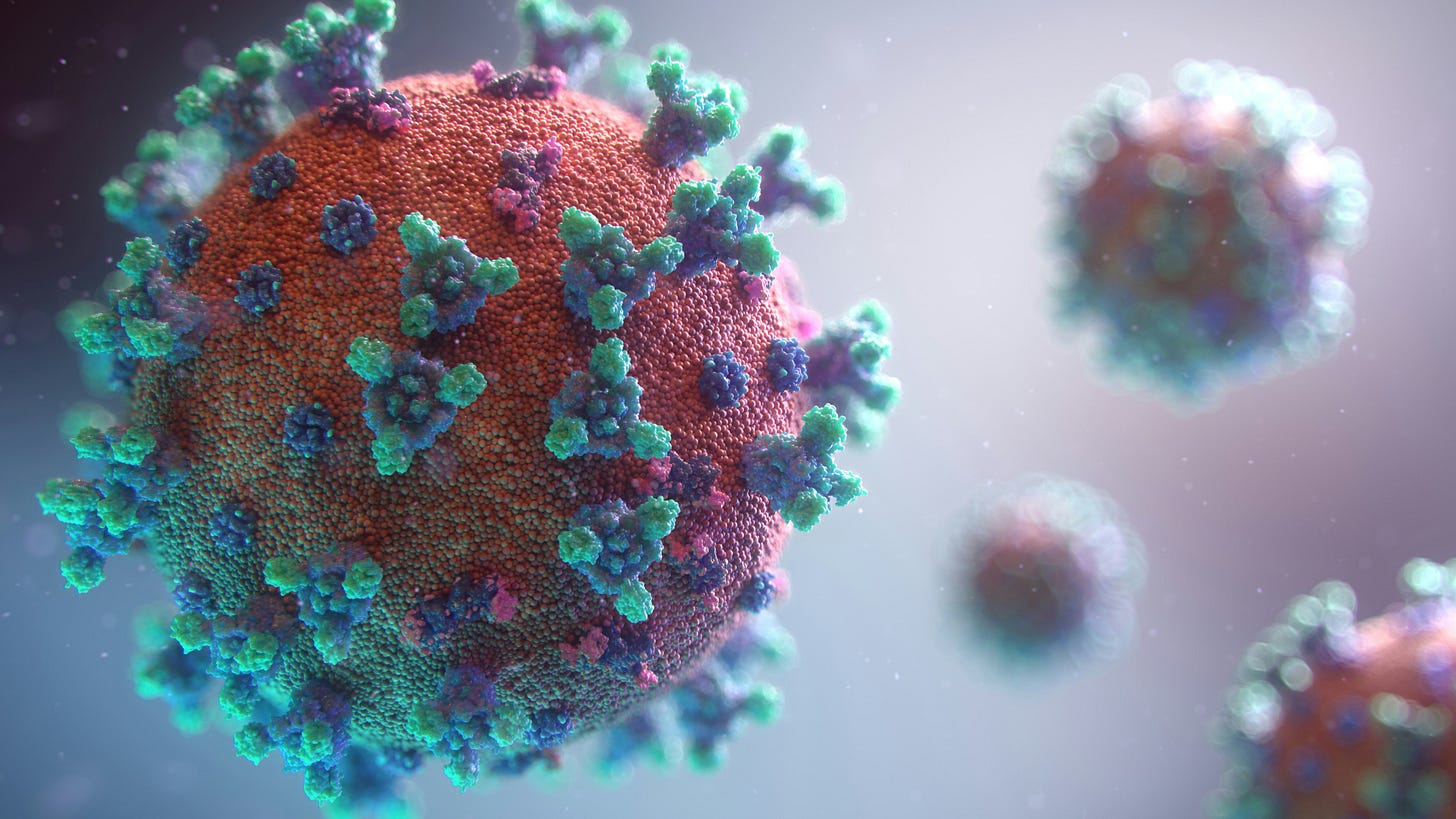Covid isn't just a physical virus
It is mirrored in some congregations' experiences of the pandemic.

Now through the end of June, you can purchase a paid subscription to this Substack at 25% off the regular price. In addition to weekly articles, paid subscribers receive a bonus post per month. Whether or not you are a paid subscriber, though, I greatly appreciate your readership!
The Covid-19 pandemic was a strange, scary time for anyone who paid heed to the medical and scientific communities. If you caught the virus, especially in the months before vaccines became available, you likely became very ill. Millions of people never recovered. Some of those who avoided a fatal outcome developed long Covid, a chronic condition that typically resulted in extreme fatigue and memory gaps, among other issues. Long Covid capitalized on pre-existing medical conditions and prompted new ones.
I think some congregations have developed a parallel malady.
Think about it: in churches struggling to move into a post-pandemic world, energy is low among members and sometimes even pastors. There is often a desire to return to the good old days when maybe those former times weren’t as glossy as people remember and ended for reasons we’ve long forgotten. Covid exacerbated problems that were already present, such as low-boil conflicts, and inflicted fresh fault lines when the inability to gather in person made it almost impossible to have hard conversations in helpful ways. These effects linger.
The Mayo Clinic says that researchers aren’t exactly what causes Covid-19 to morph into long Covid in human bodies. Their best hypotheses are that the virus disrupts communication with immune or neurological functions, riles up the gastrointestinal ecosystem, or awakens other viruses still hanging around. If so, maybe there are clues in here for how a congregation might heal its spiritual long Covid:
Improve formal and informal communications. There is no such thing as overcommunication. While taking pains to ensure everyone is informed seems like a lot of effort, it saves so much angst in the long run. I have recently written here about how communication is hospitality, one of the proactive ways we build community, and here about the conflict that often begins as some people knowing more than others about what is going on in the congregation.
Settle the ecosystem. People individually and collectively are not at their best when they are anxious. They are trapped in their lizard brains and unable to access creativity and big picture thinking, the very things that can calm worry. One of the best (and easiest) ways to dial back the anxiety and dial up imagination is having fun. I have written here about the importance of playing as well as praying together and here about how to incorporate a bit of recreation even into meetings.
Address lingering issues. That blow-up that has since quieted down? If it wasn’t actually resolved, it’s still hanging around. It’s slowly poisoning the congregation in almost imperceptible ways, and when the next conflict comes along, the old one will piggyback on it and make it so much worse. I have written here about some ways to address deep hurt so that it is healed and not just driven underground.
While scientists are still determining the best ways to cure long Covid, the prescriptions for sickness in congregational systems are not mysteries. That is not to say that treatment will be quick, easy, or even ever complete, because systems are dynamic. But if your church starts with just one of the above recommendations, you will soon begin to notice improvement in your congregation’s health.




